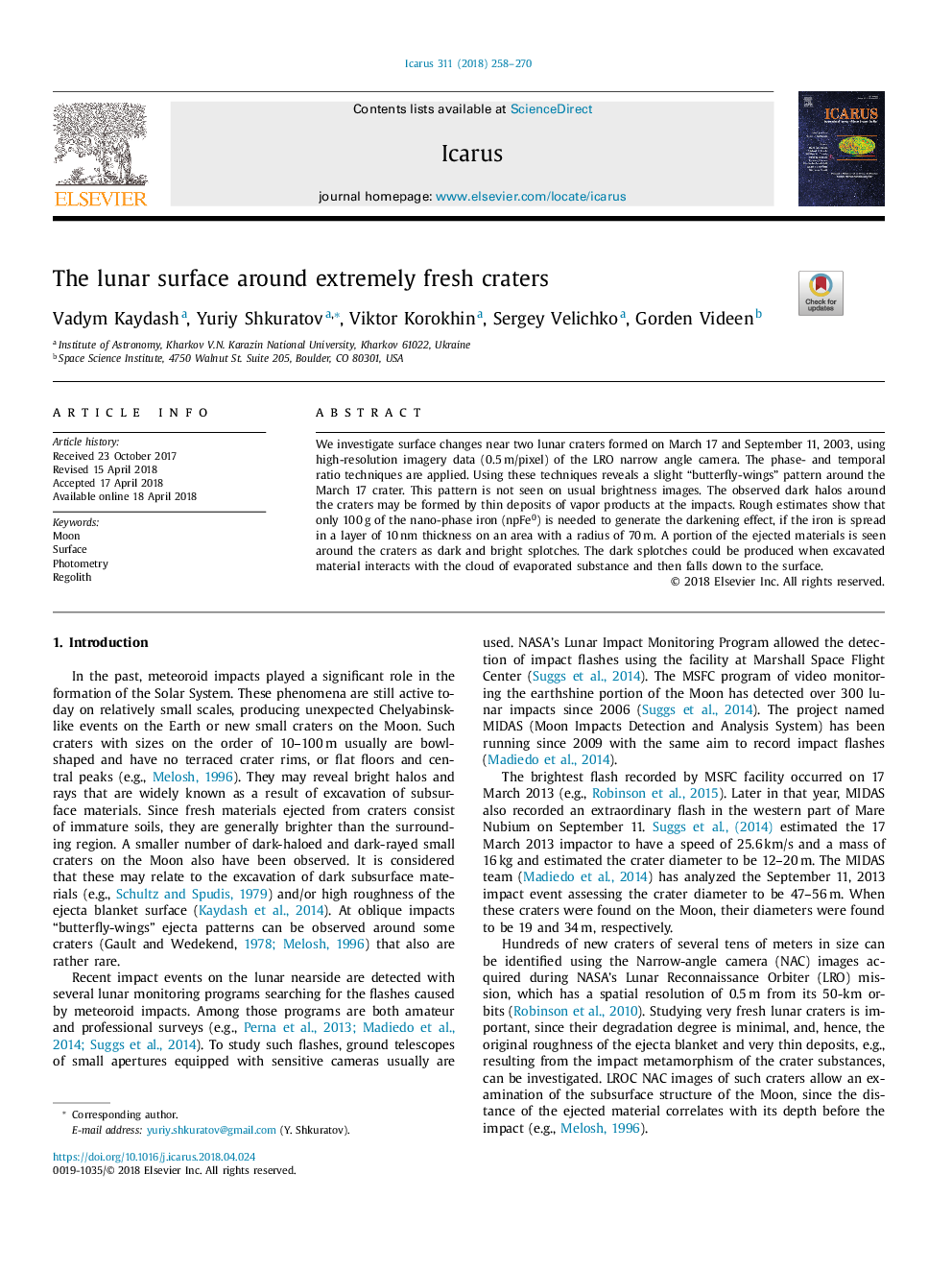| Article ID | Journal | Published Year | Pages | File Type |
|---|---|---|---|---|
| 8133977 | Icarus | 2018 | 13 Pages |
Abstract
We investigate surface changes near two lunar craters formed on March 17 and September 11, 2003, using high-resolution imagery data (0.5â¯m/pixel) of the LRO narrow angle camera. The phase- and temporal ratio techniques are applied. Using these techniques reveals a slight “butterfly-wings” pattern around the March 17 crater. This pattern is not seen on usual brightness images. The observed dark halos around the craters may be formed by thin deposits of vapor products at the impacts. Rough estimates show that only 100â¯g of the nano-phase iron (npFe0) is needed to generate the darkening effect, if the iron is spread in a layer of 10â¯nm thickness on an area with a radius of 70â¯m. A portion of the ejected materials is seen around the craters as dark and bright splotches. The dark splotches could be produced when excavated material interacts with the cloud of evaporated substance and then falls down to the surface.
Keywords
Related Topics
Physical Sciences and Engineering
Earth and Planetary Sciences
Space and Planetary Science
Authors
Vadym Kaydash, Yuriy Shkuratov, Viktor Korokhin, Sergey Velichko, Gorden Videen,
